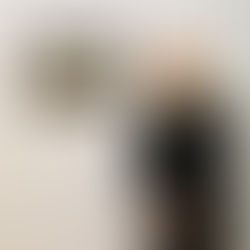Path to Abstraction - An Interview
- Jenny Reddin Artist

- May 30, 2018
- 2 min read

Tell us about your path to abstraction
I was originally drawn to portraiture and the study of the human figure but became increasingly interested in the emotion rather than the fact. Whist I admire the skills of realist artists I prefer to have the detail left to my imagination rather than have it spelt out for me to the last drop of paint. I get a great sense of satisfaction when I observe people standing in front of one of my works at an exhibition discussing what they see in the work - a face here, an animal there. The point is that for the viewer, there is a face or an animal and I think that is exciting.
How would you describe your work to someone who hasn’t seen it?
My work is reminiscent of aerial photography of monumental topography. Whilst I work with intense colours, I prefer a limited or even monochromatic palette as I rely on the highs and lows of my surface and variations in the density of pigment to provide darks and lights, transparency and opacity.
What inspires your abstract works?
I am inspired by the world around me; by nature, the incredible landscape that surrounds me, by the geological structure and colour exposed by road side cuttings, by dams, waterways and erosion, by excavated bones, patterns made by trees in a bushfire effected forest and by wind causing ripples across the surface of a dam.
Are there any artist you are particularly influenced or inspired by?
I have a broad range of artists who have inspired me a various stages of my career to date and many of them have little obvious relevance to the work that I do but provide a template for a way to think and meditate about making art (Gabriel Orozco). Others inspire because they push the boundaries and reject the notion of creating art by the rules (Urz Fischer). I find others exciting because of the medium they use in new ways. I love Jordan Eagle’s work where he uses blood rather than paint to create amazing surfaces.
Tell us about your process – how you make a work from start to finish?
I dissolve pigments in various solvents and then pour them onto surfaces that have been prepared to create texture, not for the sake of the texture itself but because it lends me highs and lows, brights and darks and changes in surface which I find endlessly interesting.
I am interested in the alchemy of painting. When I pour my dissolved pigments each has a different specific gravity and falls out of solution at different rates. Those that are heavier fall out quickly to form the base layer whist those that stay in solution longer damage the base and leave tracks and traces that are reminiscent of marks achieved in etchings or the cracks of age in an ancient oil painting. I am looking for marks that can’t be made using paint brush and traditional methods.










Comments